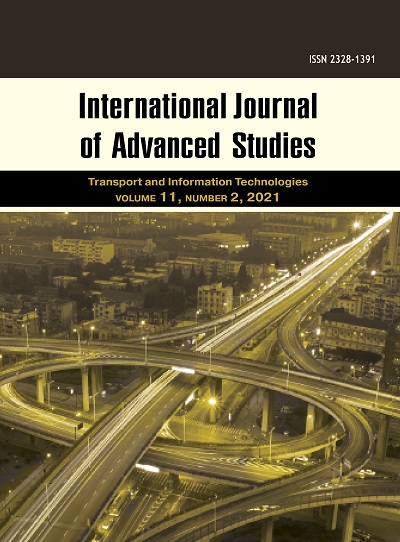МЕТОДИКА МАТЕМАТИЧЕСКОГО МОДЕЛИРОВАНИЯ ЛЕДОВЫХ ИСТИРАЮЩИХ ВОЗДЕЙСТВИЙ НА ПРИЧАЛЬНЫЕ СООРУЖЕНИЯ
Аннотация
Ледяной покров оказывает значительное истирающее воздействие на поверхность морских инженерных сооружений. В районах с высокой динамичностью дрейфа ледяного покрова одной из важнейших проблем обеспечения несущей способности элементов конструкции является определение интенсивности их износа от истирания дрейфующим льдом.
Величина ледовой абразии зависит от большого количества факторов, основными из которых являются: контактное давление, длина пути истирании и сопротивление материала ледовой абразии.
Длина пути истирания и величина контактного давления определяются процессами дрейфа ледяных образований и их взаимодействием с сооружением. Для их количественной оценки необходимо иметь математический аппарат расчета ледовой нагрузки. В то время, как экспериментальные исследования различных материалов на сопротивление ледовой абразии позволяют установить эмпирическую зависимость интенсивности ледовой абразии. Совместное использование теоретической модели взаимодействия и эмпирической модели разрушения материала позволяет создать методику расчета глубины ледовой абразии.
В статье рассматриваются методика математического моделирования ледовых истирающих воздействий на причальные сооружения.
Скачивания
Литература
Bekker A.T., Uvarova T.E., Pomnikov E.E. et al. Numerical Simulation of Ice Abrasion on Offshore Structures. Proc. of the 21th Intern. Sympos. on Ice / International Association of Hydraulic Engineering and (IAHR-12). Dalian, China, 2012.
Bekker А.Т., Uvarova Т.Е., Pomnikov Е.Е. Numerical simulation model of ice-structure interaction. Proc. of the 23rd Int. Conf.on Port and Ocean Engineering under Arctic Conditions (POAC-15). June 14-18, 2015.
Jacobsen S., Kim L.V., Pomnikov E.E. Concrete Destructure due to Ice-Indentation Pore Pressure. Proceedings of the 21-th International Offshore and Polar Engineering Conference. Rhodes, Greece, June 17–22, 2012, p. 1258-1263.
Kuznetsova M.A. Problemy obustroystva morskikh mestorozhdeniy rossiyskoy Arktiki [Problems of development of offshore fields in the Russian Arctic]. Vestnik OAO «NK Rosneft’», 2011, no. 24,
pp. 18-24.
SP 38.13330.2018 Nagruzki i vozdeystviya na gidrotekhnicheskie sooruzheniya (volnovye, ledovye i ot sudov). [Loads and impacts on hydraulic structures (wave, ice and from ships)]. Updated edition of SNiP 2.06.04-82, 2018.
Uvarova T.E. Istirayushchee vozdeystvie dreyfuyushchego ledyanogo pokrova na morskie gidrotekhnicheskie sooruzheniya [Abrasive drift effects ice cover on marine hydraulic structures]. Vladivostok, 2015, 271 p.
Uvarova, T.E. Veroyatnostnaya imitatsionnaya model’ vzaimodeystviya ledyanogo pokrova s sooruzheniem [Probabilistic simulation model of the interaction of the ice cover with the structure]. Sistemy. Metody. Tekhnologii, 2011, no. 4(12), pp. 53–60.
Conference on Port and Ocean Engineering under Arctic Conditions, Trondheim, Norway, 2015, June 14-18.
Hara, F. Saeki H., Sato M.et al. Prediction of the degree of abrasion of bridge piers by fresh water ice and the protective measures. Proc. of the Intern. Conf. on Concrete under Severe Conditions, CONSEC’95. Sapporo, Japan, 1995, vol. 1, pp. 485–494.
Hara, F. Takahashi Y., Saeki H. Evaluation of test methods of abrasion by ice movements on the surface of reinforced concrete structures. Proc. of the Intern. Conf. on Concrete under Severe Conditions, CONSEC’95. Sapporo, Japan, 1995, vol. 1, pp. 475–484.
Huovinen, S. Abrasion of concrete by ice in arctic sea structures. VTT Publications 62 (Doctoral thesis). Espoo, 1990, 110 p.
Jacobsen S., Scherer G. W., Schulson E. M., Concrete–ice abrasion mechanics. Cement and Concrete Research, 2015, vol. 73, pp. 79-95.
Janson, J.E. Long Term Resistance of Concrete Offshore Structures in Ice Environment. Proc. 7th Intern. Conf. on Offshore Mechanics and Arctic Engineering (OMAE). Houston, Texas, N.Y. American Society of Mechanical Engineers, 1988, vol. 3, pp. 225–231.
Janson, J.E. Report of field investigation of ice impact on lightweight aggregate concrete – results from the winter season 1986–1987. VBB: Stockholm, Sweden, 1987.
Shamsutdinova G., Hendriks M.A.N., Jacobsen S., Concrete-ice abrasion: wear, coefficient of friction and ice consumption. Wear, 2018, no. 416-417, pp. 27-35.
Просмотров аннотации: 308
Copyright (c) 2021 Anton A. Zverev, Aleksandr T. Bekker, Tatiana E. Uvarova, Tamara D. Belyaeva

Это произведение доступно по лицензии Creative Commons «Attribution-NonCommercial-NoDerivatives» («Атрибуция — Некоммерческое использование — Без производных произведений») 4.0 Всемирная.







































